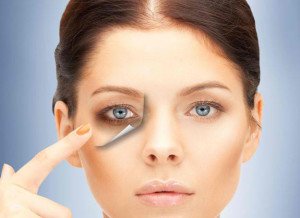Treatment that Helps to Reduce Dark Circles Under the Eyes?
Are you bothered by the dark circles under your eyes? If you are having a very stressful week and long days of sleepless nights, dark circles usually appears. It is associated usually with lack of sleep, or it can also be hereditary and other more possible reasons. Having a dark circle around the eyes makes you look old, tired, and it may imply that you had several sleepless night.
Dark circles are common cosmetic problem worldwide. It is a round, homogeneous, and bilateral pigmented macules which is seen in the periorbital area. The reasons why it appears are multifactorial.
Good thing, there are many available dermatological treatments which is being used to reduce the dark circles seen in the periorbital area, these include:
- Bleaching creams
- Topical retinoic acid
- Lasers
- Chemical peels
- Injectable Fillers
- Autologous Fat Transplantation
- Surgery or Blepharoplasty
Recently, a new treatment modality is being introduced in the dermatological clinic to treat dark circle. It is a combination therapy of dermarolling with microneedling and 10% trichloroacetic acid or TCA.[1] Researchers found out that this combination therapy is effective in removing dark circles under the eyes.
In the study, they asked females ages between 21 to 61 years to participate in the study. These volunteers had mild to severe infraorbital dark circles. During the study, they had an automatic microneedle therapy with 10% TCA topical solution which is applied on each of the infraorbital area for around five minutes.1
Almost all the patients showed a significant improvement after the therapy. The study participants had a satisfactory rate of almost 92.3%. 1 More so, the entire procedure was well tolerated by the volunteers. If there is any noted side effect in the procedure that are common to all the volunteers it would be:
- Mild discomfort
- Transient erythema
- Edema
The above symptoms were observed during the treatment while some experienced the symptoms after the therapy. The volunteers were regularly followed for four months and there was no any recurrence noted. Thus, it was concluded that the combination therapy of microneedling and 10% TCA is effective in treating dark circles with minimal side-effects.
What Causes Dark Circles?
There are many possible causes why you have dark circles. It can be due to:
- Hyperpigmentation caused by atopic dermatitis or allergy
- Blood stasis
- Thin epidermis or dermis under the eye
- Structural shadowing effects
Your lifestyle and other risk factors may also contribute to dark circles under the eyes.[2] The other risk factor includes:
- Impact of melanin
- Blood Factors
- Epidermal and Dermal Factors
But among these, the family history is the most significant factor for the appearance of dark circles. Most likely, if it runs into your blood, then you will have it. If your mom, dad, and aunt have it, there is a high probability that you will also develop dark circles under the eyes.
Other possible indications of dark circles is asthma. But the main factors for the appearance of dark circles are melanin and having deoxygenated blood.2
Given the fact that there are many underlying cause of periorbital dark circles[3], it is challenging to remove it. Thus, a lot of newer therapeutic options are appearing to provide a more effective result like dermarolling therapy in combination with topical serums. This is in addition to wide array of conventional treatments like laser devices, topical creams, fillers and many others that are used to remove dark circles.
Indeed, microneedling therapy is a new treatment modality that offers a promising future for dark circles treatment.
How to Avoid Dark Circles Under the Eyes?
If the reasons for the dark circles under your eyes are lack of sleep, then the best solution is to take a break. If you are under stress for the past few days and you were unable to have a good night sleep, dark circles appear to remind you that you need to slow down a bit.
It would be good for your body if you sleep for at least eight to ten hours a day. If it is not possible with the kind of work you have, you have the right to ask for a vacation to give your body a time to rest.
But if the reason for your dark circles is hereditary, then the best thing you can do is try the conventional treatment for periorbital dark circles. You may also try dermarolling therapy with TCA solution for faster and more efficient results.
The procedure is generally safe so you have nothing to worry. If there are side effects, it is only minimal and can be well-tolerated.
Why Should you Try Dermarolling Therapy?
The best thing about dermarolling therapy is that it is simple and very easy procedure. It can be done in an outpatient clinic procedure or at the comforts of your own home. Usually, it will only take you a fewer than two hours to complete the procedure including the application of anesthetic topical cream.
Dermarolling Therapy or Microneedling is very affordable treatment modality even if you had it done in a dermatologist clinic. But if you want to do it yourself, there are many homecare treatment kits that you can buy online and in your favorite drugstore.
Don’t let this cosmetic problem lessened your self-esteem. There are many new treatment modalities now that offers faster result at a lesser price. You just have to be brave enough to try them and explore newer treatment modality.
Bibliography
[1] Kontochristopoulos G1, Kouris A, Platsidaki E, Markantoni V, Gerodimou M, Antoniou C. (2016). Combination of microneedling and 10% trichloroacetic acid peels in the management of infraorbital dark circles. J Cosmet Laser Ther. , 289-92.
[2] Matsui MS1, Schalka S2, Vanderover G1, Fthenakis CG1, Christopher J, Bombarda PC, Bueno JR, Viscomi BL, Bombarda Júnior MS. (2015). Physiological and lifestyle factors contributing to risk and severity of peri-orbital dark circles in the Brazilian population. An Bras Dermatol. , 494-503. .
[3] Friedmann DP, Goldman MP. (2015). Dark circles: etiology and management options. Clin Plast Surg. , 33-50. Kontochristopoulos G1, Kouris A, Platsidaki E, Markantoni V, Gerodimou M, Antoniou C. (2016).










Please add your thoughts
Leave a Reply
Want to join the discussion?Feel free to contribute!